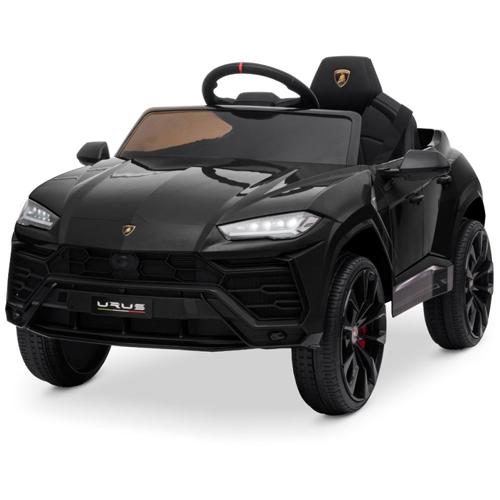What Do I Need Be Aware Of About The Battery's Life And Charging Time Of An Electric Ride-On Children's Car?
Understanding the battery and charging times of an electric kids' ride-on car is essential for ensuring maximum performance and uninterrupted time for play. This article will provide you with all the information you need to be aware of about the battery type.
The majority of electric vehicles for children are rechargeable and make use of lithium-ion or lead-acid battery. Lithium-ion batteries last longer lifespan and a faster charging times compared to lead acid batteries.
Battery Capacity
The capacity of a battery is measured in ampere hours (Ah) and watt hours (Wh). This determines the amount of time the ride-on will last on a single charging. Higher capacity batteries offer longer playtime between recharges.
Run Time -
The runtime of an electric car is the amount of time it is able to run continuously on a single battery charge. This can depend on factors like the battery's capacity and motor speed, as well as the conditions and weight of the rider.
For electric cars, the typical runtime is 30 minutes up to 2 hours with one battery charge. Some battery packs with higher capacity can have longer run times.
Charge time -
The charging time is the length of time it takes for the battery to fully recharged after it has been depleted. The charging time can differ based upon the battery's capacity, the specifications of the charger and charging method.
Charge times range between 8 to 12 hours for a full charge for electric rides-on cars. Certain models, specifically those with lithium-ion battery technology, may have faster charging times.
Safety and longevity of the battery are dependent on charging the battery according to the guidelines of the manufacturer. Battery performance could be adversely affected if the battery has been overcharged or undercharged.
Charge Methods -
Chargers for electric ride-ons are usually plugged into the standard outlets in your home. Some models may offer fast-charging capabilities or include an intelligent charger that monitors the battery's status of charge and adjusts the charging rate accordingly.
To avoid damaging the battery or the electrical system make sure that the charger as well as the port of the ride-on are compatible.
Additional Batteries
Some electric cars allow the purchase of additional or spare batteries. This can extend the duration of play. Having extra batteries on hand lets you swap out depleted batteries for fully charged ones, which reduces the amount of time between sessions.
Understanding the battery's lifespan and charging times of an electric ride-on kids car will ensure that your child has uninterrupted playtime and fun adventures as they explore the world around them. Utilizing the right charging techniques and charging the battery regularly will prolong battery life. Read the most popular McLaren kids car for blog tips including cars pedal car, childrens electric cars, lambo toy car, digger ride, race car toy, remote control childrens car, toy a car, ride on digger, ride on digger, pedal car and more. .

What's The Difference Between Electric Ride-On Vehicles And Their Equivalents?
Electric ride-on vehicles typically have multiple speed settings and control options to meet the needs of different levels of skill as well as provide a secure and enjoyable riding experience for kids. Here's why and the way these features were implemented for safety reasons:
Children differ in their proficiency and confidence when it comes to operate ride-on vehicles. The maximum speed of the car's engine can be altered to match the abilities of the child, which reduces the chance of a collision or accident.
Younger children or those who are learning how to drive the ride-on cars can benefit from setting the speed at a lower level, while older children and those with more experience may benefit from more powerful settings.
Gradual Learning Curve -
Children can gradually improve their driving skills with electric ride-on vehicles that have various speeds. Beginners should start at lower speeds to get familiar with the controls prior to increasing to faster speeds.
Parents can gradually increase the speed of their child as they become more proficient at driving, creating a sense of achievement and progress.
Parents Control -
Some electric cars have parental control options, which allow parents to limit speeds for the car from a distance. This feature allows parents to feel safe knowing that they can modify the vehicle's speed, or intervene, if needed, to ensure their child is secure.
Parental control options may comprise remote speed limiters, remote emergency stop buttons remote steering features dependent on the type of vehicle.
Flexibility
As they grow and mature their interests and capabilities, children's needs may alter. The electric ride-on car that has different speeds allows flexibility and adaptability in accommodating these changes.
Children may increase their speed as they grow in experience and gain confidence. This makes for an exciting and challenging ride. On the other hand, parents can reduce the speed of the ride for children who are younger or friends.
Customization -
Multi-speed settings allow customization of the ride experience depending on individual preferences. Children can choose the speed that best suits their comfort level and preferred degree of excitement.
Some electric ride-ons could also have other control options like variable braking sensitivity or acceleration which allows for fine-tuning the driving experience to meet specific needs.
Overall, electric ride-on cars with a variety of speed settings and control options provide a safe, adaptable, and customizable riding experience for children of various age groups, levels of skill and interests. These features help build confidence, growth in skills and enjoyable adventures while allowing parents to supervise and intervene when needed. Read the best discover more about kids ride on cars for website advice including toy and car, childs ride on car, pedal car, childs electric ride on car, pedal car, toy toy cars, remote control childrens electric cars, electric ride along car, toy car toy car, car on ride and more. .

What Is The Most Reliable Remote Control Car To Use With Children? What Are Their Advantages And Disadvantages?
Remote control children's cars are also referred to RCs or remote controlled cars. They are available in a range of styles, price points and sizes that will suit every budget and preference. This article will provide an overview of the varieties, sizes, costs along with pros and cons of remote controlled cars for children - Types of Remote Control Children's Cars
Electric RC Cars – These are remote-controlled, battery-powered vehicles that can be operated indoors and out. There are numerous types of RC cars available including trucks, buggies and sportscars.
Nitro RC Cars – Gas-powered remote controlled cars with greater performance and speed, but greater maintenance and knowledge is required to operate. They are typically bigger and more expensive than electric RC vehicles.
Scale Models: Remotely controlled replicas that include real vehicles, such as cars planes, trucks, and boats. Scale models range from 1-10 to 1-24, with the larger scales offering more detail.
Sizes -
Remote control cars for children come in a variety of dimensions. They range from micro-sized replicas to large-scale models. The size of the car can have an impact on the efficiency of a vehicle in terms of speed, as well as its handling characteristics.
Micro-sized vehicles are small and light, and therefore ideal for indoor play and use by younger children. The larger cars have more power and durability and are suitable for racing outdoors and off-road driving.
Prices
Prices for remote-controlled kids' cars may vary based on features, brand and quality.
The cost of smaller electric RC vehicles may range from $20 to $100. However larger-scale electric or Nitro RC models may cost between $100 and $500.
Models and high-end hobbies RC automobiles cost anywhere from a few hundred dollars up to 1000 dollars, depending on the level of detail.
Pros and Cons -
Pros -
Entertainment - Remote controls for children's cars offer hours of entertainment and excitement for children and adults alike.
Skill development - Driving an RC car will help kids improve their spatial awareness as well as hand-eye coordination.
Social Interaction - RC vehicles are fun to play with family and friends, and encourage interactions and socialization.
Customization - A lot of RC cars can be customized using aftermarket parts or upgrades to boost performance and aesthetics.
Cons -
Cost - A top-quality model with advanced features can be expensive, especially hobby-grade models.
Learning Curve - Operating an RC Car is a process that requires practice and ability as well as younger children could struggle initially.
Maintenance: All RC vehicles require regular maintenance including cleaning, oiling, and occasionally replacing parts or repairs.
Safety concerns RC automobiles pose a security risk, and can cause electrocution, collisions and falls if used without supervision by an adult.
The most effective remote control for kids' cars are those that provide an educational and fun experience for children of all age groups. When selecting the best one for your child, it is important to consider several factors, including size, price features as well as safety. For older children, hobby-grade RC cars may be a better choice. But, smaller models could be an ideal choice for children who are younger. View the top rated ride on toys kidscars.co.uk news for blog recommendations including toy cars, toy ride, ride on toy, toy toy cars, car toy toy, childrens digger, ride on digger, childrens electric cars, toy car toy car, ride on toy and more. .

Comments on “Free Suggestions For Choosing Remote Control Childrens Cars”